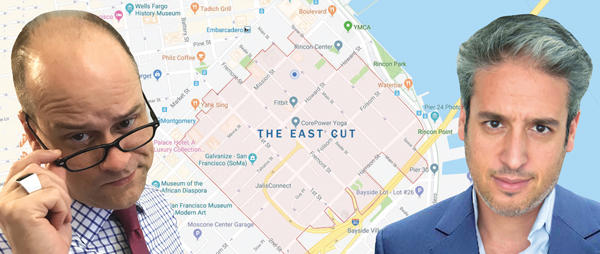Trending
Google’s name game hits nerves
Residential brokers sound off on the search giant’s latest real estate play — renaming nabes

Google isn’t just snapping up chunks of New York City and the Bay Area, it’s also starting to rebrand neighborhoods. And it seems U.S. lawmakers aren’t the only ones looking for answers from the Silicon Valley search giant.
After the New York Times reported that Google Maps has renamed parts of Manhattan, Brooklyn, San Francisco and Detroit, The Real Deal spoke to several New York brokers about their yearning for a dislike button.
Stribling & Associates’ Pamela D’Arc bemoaned that the mapping service has even split the prestigious blocks of Sutton Place into “Sutton Place North” and “Sutton Place South.”
“It’s not helpful in any way, and the truth is it’s not a big neighborhood to start with. To now turn it into two different locations is ludicrous,” she said, adding that she hopes other brokers don’t start to adopt the new names.
Other nonexistent neighborhoods that have popped up on Google Maps include “Midtown South Central” in Manhattan and “the East Cut” in San Francisco, according to the Times.
Mdrn. Residential’s Kobi Lahav recalled when Google Maps was something to avoid “unless you wanted to find yourself in the middle of nowhere.”
“What’s the next step?” he said. “Will they create a state that doesn’t exist? What happens if in Israel they decide that Palestine is now a state. Do we give them political power?”
Douglas Wagner, of Bond New York, criticized Google for not using the same amount of resources to establish credibility as it has with general content searching.
Of course, New York real estate players are no strangers to redrawing neighborhood boundaries, such as the South Bronx (“SoBro”) and the lower parts of Harlem (“SoHa”).
But Wagner argued that the renaming of New York neighborhoods usually begins with local residents.
He pointed to NoMad, short for “North of Madison Square Park,” which he said took two decades to catch on even though people in the area had been calling it that for years.
“That’s how it happens,” Wagner said, “organically on the ground.”
D’Arc, on the other hand, recalled that when the Meatpacking District was first given its name, some people “thought it was called the Meat Passing district” — though it didn’t take much for the rebranding to catch on.




